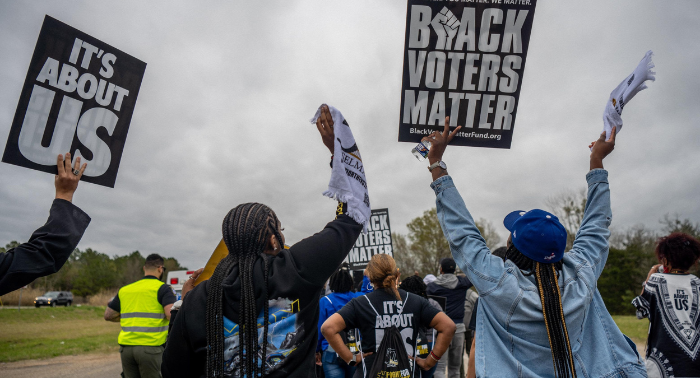Economic analysts examining the labor market’s recovery from the COVID-19 pandemic note a trend where minority and less-educated workers, particularly those from Black and Hispanic communities, have experienced more significant employment gains compared to their white or college-educated counterparts. However, there is now a growing concern that these groups might bear the brunt of rising unemployment as the demand for labor starts to decline.
William M. Rodgers III, Vice President and Director of the Institute for Economic Equity at the St. Louis Federal Reserve, shared insights at a recent Boston Fed labor market conference. Rodgers indicated that despite a slight increase in the unemployment rate from April’s historic low of 3.4%, the employment landscape has not significantly diverged for different racial groups, genders, or educational levels.
During the recovery period, starting in March 2022, which coincided with the Federal Reserve’s interest rate hikes and consistently low unemployment rates below 4%, disadvantaged groups have maintained their employment gains from the pandemic. This is evident in the employment-to-population ratios for Black men and women, which have remained higher on average from March 2022 through September 2023 than pre-pandemic levels. Similarly, employment rates for individuals without a high school diploma have shown an upward trend, contrasting with the static figures for more educated groups.
However, younger workers, particularly young Blacks not in school, are beginning to see deteriorating job prospects, signaling that the benefits of the current labor market may not be sustainable.
Rodgers noted that while there hasn’t been a significant increase in unemployment rates for most population segments, there is a concerning uptick in joblessness among young people. Echoing this sentiment, Torsten Slok, Chief Economist at Apollo Global Management, highlighted the increase in unemployment rates among 16- to 19-year-olds from 9.2% in April to 13.2% in October as a potential indicator of broader labor market challenges.
The Federal Reserve, grappling with the highest inflation rates in four decades, embarked on an aggressive interest rate hiking campaign from March 2022 through July. The aim was to curb inflation while preserving the employment gains of recent years. Fed Chair Jerome Powell often referred to 2019 as an ideal economic state, with low unemployment and inflation, wage growth favoring lower-paid workers, and a narrowing unemployment gap between white and minority workers.
This period led to a reassessment among Fed officials about the lowest sustainable unemployment rate without risking inflation. Recent research suggests the existence of untapped labor pools that become accessible only in a tight job market, arguing for a more lenient monetary policy.
As inflation shows signs of slowing, the Fed awaits to see if it has achieved the challenging “soft landing” and whether the pandemic’s unique circumstances have altered the distribution of jobs, income, and opportunities across the economy.
A JPMorgan Chase Institute study found that median income gains for Black and Hispanic families outstripped inflation during the pandemic, with their inflation-adjusted incomes higher through August than at the end of 2019. In contrast, white and Asian incomes adjusted for inflation were slightly lower.
The study also revealed that workers in the lowest pay quartile saw a 6% real income increase since 2019, surpassing other income groups.
Despite the inflation challenges, “we still see real wage growth, particularly higher for Black and Hispanic families,” noted Chris Wheat, president of the institute. This growth might be attributed to changes in occupational and wage structures during the pandemic, necessitating higher wages for in-person services, and a general increase in workers’ bargaining power.
Cecilia Rouse, the former head of the Council of Economic Advisers under President Joe Biden and the incoming president of the Brookings Institution think tank, commented at the Boston Fed conference that the labor market recovery has been “remarkably equitable.” Yet, the upcoming months will be critical.
For instance, the unemployment rate gap between white and Black workers, which narrowed significantly after the economy reopened, has started to widen again. The percentage increase in unemployed Black individuals is nearly double that of whites.
Rouse highlighted that while pandemic-era programs provided a safety net and the tight job market offered many a foothold, the durability of these gains remains uncertain.




